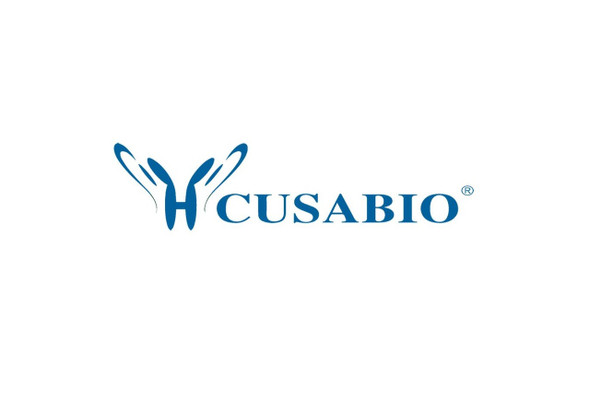Cusabio Human Recombinants
Recombinant Human Forkhead box protein P1 (FOXP1), partial | CSB-EP008841HU
- SKU:
- CSB-EP008841HU
- Availability:
- 13 - 23 Working Days
Description
Recombinant Human Forkhead box protein P1 (FOXP1), partial | CSB-EP008841HU | Cusabio
Alternative Name(s): Mac-1-regulated forkhead1
Gene Names: FOXP1
Research Areas: Transcription
Organism: Homo sapiens (Human)
AA Sequence: MMQESGTETKSNGSAIQNGSGGSNHLLECGGLREGRSNGETPAVDIGAADLAHAQQQQQQALQVARQLLLQQQQQQQVSGLKSPKRNDKQPALQVPVSVAMMTPQVITPQQMQQ
Source: E.coli
Tag Info: N-terminal GST-tagged
Expression Region: 1-114aa
Sequence Info: Partial
MW: 39.2 kDa
Purity: Greater than 90% as determined by SDS-PAGE.
Relevance: Transcriptional repressor . Can act with CTBP1 to synergistically repress transcription but CTPBP1 is not essential . Plays an important role in the specification and differentiation of lung epithelium. Acts cooperatively with FOXP4 to regulate lung secretory epithelial cell fate and regeneration by restricting the goblet cell lineage program; the function may involve regulation of AGR2. Essential transcriptional regulator of B-cell development. Involved in regulation of cardiac muscle cell proliferation. Involved in the columnar organization of spinal motor neurons. Promotes the formation of the lateral motor neuron column (LMC) and the preganglionic motor column (PGC) and is required for respective appropriate motor axon projections. The segment-appropriate generation of spinal chord motor columns requires cooperation with other Hox proteins. Can regulate PITX3 promoter activity; may promote midbrain identity in bryonic st cell-derived dopamine neurons by regulating PITX3. Negatively regulates the differentiation of T follicular helper cells T(FH)s. Involved in maintainance of hair follicle st cell quiescence; the function probably involves regulation of FGF18 . Represses transcription of various pro-apoptotic genes and cooperates with NF-kappa B-signaling in promoting B-cell expansion by inhibition of caspase-dependent apoptosis . Binds to CSF1R promoter elents and is involved in regulation of monocyte differentiation and macrophage functions; repression of CSF1R in monocytes ses to involve NCOR2 as corepressor . Involved in endothelial cell proliferation, tube formation and migration indicative for a role in angiogenesis; the role in neovascularization ses to implicate suppression of SA5B . Can negatively regulate androgen receptor signaling .
Reference: The FOXP1 winged helix transcription factor is a novel candidate tumor suppressor gene on chromosome 3p.Banham A.H., Beasley N., Campo E., Fernandez P.L., Fidler C., Gatter K., Jones M., Mason D.Y., Prime J.E., Trougouboff P., Wood K., Cordell J.L.Cancer Res. 61:8820-8829(2001)
Storage: The shelf life is related to many factors, storage state, buffer ingredients, storage temperature and the stability of the protein itself. Generally, the shelf life of liquid form is 6 months at -20?/-80?. The shelf life of lyophilized form is 12 months at -20?/-80?.
Notes: Repeated freezing and thawing is not recommended. Store working aliquots at 4? for up to one week.
Function: Transcriptional repressor
Involvement in disease: Mental retardation with language impairment and autistic features (MRLIAF)
Subcellular Location: Nucleus
Protein Families:
Tissue Specificity: Isoform 8 is specifically expressed in embryonic stem cells.
Paythway:
Form: Liquid or Lyophilized powder
Buffer: If the delivery form is liquid, the default storage buffer is Tris/PBS-based buffer, 5%-50% glycerol. If the delivery form is lyophilized powder, the buffer before lyophilization is Tris/PBS-based buffer, 6% Trehalose, pH 8.0.
Reconstitution: We recommend that this vial be briefly centrifuged prior to opening to bring the contents to the bottom. Please reconstitute protein in deionized sterile water to a concentration of 0.1-1.0 mg/mL.We recommend to add 5-50% of glycerol (final concentration) and aliquot for long-term storage at -20?/-80?. Our default final concentration of glycerol is 50%. Customers could use it as reference.
Uniprot ID: Q9H334
HGNC Database Link: HGNC
UniGene Database Link: UniGene
KEGG Database Link: KEGG
STRING Database Link: STRING
OMIM Database Link: OMIM









